Advertisement
Compare Solar Installer Quotes
Over the last 12 years SolarQuotes® has steadily built a network of heavily vetted solar installers. Get up to 3 free, no obligation quotes from highly-qualified installers.
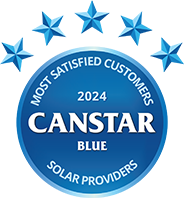
Red Energy is once again at the top of our customer satisfaction ratings for solar power providers in Australia, blitzing past big names including AGL, Origin and EnergyAustralia. Red Energy scored five stars for overall customer satisfaction, customer service, bill and cost clarity and ease of sign-up.
We all know solar can help you save on power, but many of us still overlook the importance of finding the right electricity provider. You deserve to be rewarded properly for your solar investment, and that means your provider should go above and beyond to help you save. That’s where Canstar Blue comes in to help, by annually canvassing the opinions of solar customers right across Australia.
This year we asked more than 2,100 bill-paying solar customers to rate their solar energy provider across key variables like customer service, bill and cost clarity, ease of sign-up, solar tariff rate, online tools and advice and value for money, to help you make a better-informed decision.
Canstar Blue surveyed 2,155 Australian households for their feedback on their solar electricity retailer. Respondents had to have a solar electricity account and pay the bills for their response to be eligible.
Respondents rate their satisfaction with their solar electricity provider from zero to 10, where zero is extremely dissatisfied and 10 is extremely satisfied. Provider satisfaction was rated by respondents on the following criteria:
The winning brand is the one that receives the highest overall satisfaction rating once all the scores from the Overall satisfaction criteria are combined and averaged.
Brands must have received at least 30 responses to be included, so not all brands available in the market have been compared in this survey. The brands rated in this survey are listed below in order of best overall satisfaction.
Best solar electricity providers in Australia:
Red Energy was the only solar electricity provider to be rated five stars for overall satisfaction by its solar customers in 2024. It also achieved top marks for its customer service, bill and cost clarity and ease of sign-up. Dodo, Engie, Lumo Energy and Alinta Energy each received four stars for overall satisfaction. EnergyAustralia, Origin, ActewAGL, Ergon, AGL and Aurora all received three stars for overall satisfaction.
Find more detailed information on our ratings methodology.
Here are some of the cheapest solar-specific deals from the retailers on our database. These costs are based on the Ausgrid network in Sydney but prices will vary depending on your circumstances. We show one product per retailer, listed in order of lowest price first. Annual price estimates assume general energy usage of 3911kWh/year for a residential customer on a single rate tariff. Price estimates exclude solar feed-in tariff credits. These are products from referral partners†. Our database may not cover all deals in your area, and please check retailer websites for up to date information.
Here are some of the cheapest solar-specific deals from the retailers on our database. These costs are based on the Citipower network in Melbourne but prices will vary depending on your circumstances. We show one product per retailer, listed in order of lowest price first. Annual price estimates assume general energy usage of 4000kWh/year for a residential customer on a single rate tariff. Price estimates exclude solar feed-in tariff credits. These are products from referral partners†. Our database may not cover all deals in your area, and please check retailer websites for up to date information.
Here are some of the cheapest solar-specific deals from the retailers on our database. These costs are based on the Energex network in Brisbane but prices will vary depending on your circumstances. We show one product per retailer, listed in order of lowest price first. Annual price estimates assume general energy usage of 4613kWh/year for a residential customer on a single rate tariff. Price estimates exclude solar feed-in tariff credits. These are products from referral partners†. Our database may not cover all deals in your area, and please check retailer websites for up to date information.
Here are some of the cheapest solar-specific deals from the retailers on our database. These costs are based on SA Power network in Adelaide but prices will vary depending on your circumstances. We show one product per retailer, listed in order of lowest price first. Annual price estimates assume general energy usage of 4011kWh/year for a residential customer on a single rate tariff. Price estimates exclude solar feed-in tariff credits. These are products from referral partners†. Our database may not cover all deals in your area, and please check retailer websites for up to date information.

Red Energy has come away with five stars for its overall satisfaction, customer service, bill and cost clarity and ease of sign-up. Red Energy also received four stars for value for money, and three stars for its solar tariff rate and online tools and advice.
Red Energy is a well-rounded retailer, offering competitive electricity rates as well as moderate feed-in tariffs in New South Wales, Victoria, Queensland and South Australia. It has one solar-specific plan in NSW, plus a Qantas Solar plan available in QLD. Red Energy also offers attractive feed-in tariff rates across its standard plans in other states. The retailer’s big selling point is its partnership with Qantas, which includes Frequent Flyer points with some plans.
Here are Red Energy’s plans on our database for NSW. These are products from a referral partner†. These costs are based on the Ausgrid network in Sydney but prices may vary depending on your circumstances. This comparison assumes general energy usage of 3911kWh/year for a residential customer on a single rate tariff. Please use our comparison tool for a specific comparison in your area. Our database may not cover all deals in your area. As always, check all details of any plan directly with the retailer before making a purchase decision.
Here are Red Energy’s plans on our database for Victoria. These are products from a referral partner†. These costs are based on the Citipower network in Melbourne but prices may vary depending on your circumstances. This comparison assumes general energy usage of 4000kWh/year for a residential customer on a single rate tariff. Please use our comparison tool for a specific comparison in your area. Our database may not cover all deals in your area. As always, check all details of any plan directly with the retailer before making a purchase decision.
Here are Red Energy’s plans on our database for SEQ. These are products from a referral partner†. These costs are based on the Energex network in Brisbane but prices may vary depending on your circumstances. This comparison assumes general energy usage of 4613kWh/year for a residential customer on a single rate tariff. Please use our comparison tool for a specific comparison in your area. Our database may not cover all deals in your area. As always, check all details of any plan directly with the retailer before making a purchase decision.
Here are Red Energy’s plans on our database for South Australia. These are products from a referral partner†. These costs are based on the SA Power network in Adelaide but prices may vary depending on your circumstances. This comparison assumes general energy usage of 4011kWh/year for a residential customer on a single rate tariff. Please use our comparison tool for a specific comparison in your area. Our database may not cover all deals in your area. As always, check all details of any plan directly with the retailer before making a purchase decision.

Dodo earned four stars for overall satisfaction, plus five stars for value for money – the only retailer to score perfect marks in the value category this year. It also received four stars for customer service, bill and cost clarity, solar tariff rate, and online tools and advice, along with three stars for ease of sign-up.
Primarily known as an internet and phone provider, Dodo also offers electricity in NSW, VIC, QLD, with plans all offering a consistent solar feed-in tariff. While the brand doesn’t sell solar-specific plans, its competitive usage and supply rates are worth considering in addition to its moderate feed-in tariffs. Customers can also claim telco discounts by bundling with home internet.
Here are the Dodo plans on our database for NSW. These are products from a referral partner†. These costs are based on the Ausgrid network in Sydney but prices may vary depending on your circumstances. This comparison assumes general energy usage of 3911kWh/year for a residential customer on a single rate tariff. Please use our comparison tool for a specific comparison in your area. Our database may not cover all deals in your area. As always, check all details of any plan directly with the retailer before making a purchase decision.
Here are the Dodo plans on our database for Victoria. These are products from a referral partner†. These costs are based on the Citipower network in Melbourne but prices may vary depending on your circumstances. This comparison assumes general energy usage of 4000kWh/year for a residential customer on a single rate tariff. Please use our comparison tool for a specific comparison in your area. Our database may not cover all deals in your area. As always, check all details of any plan directly with the retailer before making a purchase decision.
Here are the Dodo plans on our database for SE QLD. These are products from a referral partner†. These costs are based on the Energex network in Brisbane but prices may vary depending on your circumstances. This comparison assumes general energy usage of 4613kWh/year for a residential customer on a single rate tariff. Please use our comparison tool for a specific comparison in your area. Our database may not cover all deals in your area. As always, check all details of any plan directly with the retailer before making a purchase decision.
Here are the Dodo plans on our database for SA. These are products from a referral partner†. These costs are based on the SA Power network in Adelaide but prices may vary depending on your circumstances. This comparison assumes general energy usage of 4011kWh/year for a residential customer on a single rate tariff. Please use our comparison tool for a specific comparison in your area. Our database may not cover all deals in your area. As always, check all details of any plan directly with the retailer before making a purchase decision.

Engie was awarded four stars for overall satisfaction, value for money, customer service, bill and cost clarity, online tools and advice and ease of sign-up. It also took home three stars for its solar tariff rate.
Engie maintains a range of energy offers, such as deals exclusive to members of certain clubs. The retailer offers solar-specific plans in NSW, VIC, QLD and SA, which come with higher solar feed-in tariffs; NRMA customers in NSW can also sign up for an exclusive solar plan. Aside from its solar offers, Engie’s market offer plans also include average solar feed-in tariff rates.
Here are the Engie Solar plans on our database for NSW. These costs are based on the Ausgrid network in Sydney but prices may vary depending on your circumstances. This comparison assumes general energy usage of 3911kWh/year for a residential customer on a single rate tariff. Please use our comparison tool for a specific comparison in your area. Our database may not cover all deals in your area. As always, check all details of any plan directly with the retailer before making a purchase decision.
Here is the Engie Solar plan on our database for Victoria. These costs are based on the Citipower network in Melbourne but prices may vary depending on your circumstances. This comparison assumes general energy usage of 4000kWh/year for a residential customer on a single rate tariff. Please use our comparison tool for a specific comparison in your area. Our database may not cover all deals in your area. As always, check all details of any plan directly with the retailer before making a purchase decision.
Here is the Engie Solar plan on our database for SEQ. These costs are based on the Energex energy network in Brisbane but prices may vary depending on your circumstances. This comparison assumes general energy usage of 4613kWh/year for a residential customer on a single rate tariff. Please use our comparison tool for a specific comparison in your area. Our database may not cover all deals in your area. As always, check all details of any plan directly with the retailer before making a purchase decision.
Here are the Engie Solar plans on our database for South Australia. These costs are based on the SA Power network in Adelaide but prices may vary depending on your circumstances. This comparison assumes general energy usage of 4011kWh/year for a residential customer on a single rate tariff. Please use our comparison tool for a specific comparison in your area. Our database may not cover all deals in your area. As always, check all details of any plan directly with the retailer before making a purchase decision.

Lumo Energy received four stars for overall satisfaction, value for money, customer service, bill and cost clarity, and ease of sign-up in 2024. Lumo also earned three stars for its solar tariff rate and online tools and advice.
Lumo Energy is one of two retail brands owned by renewable energy generation company, Snowy Hydro – the other being Red Energy. Operating in Victoria and South Australia only, Lumo Energy offers fairly competitive feed-in tariffs across its market offers in each state. The retailer also runs its Lumo Rewards program, which brings various savings at retail stores, restaurants and cinemas.
Here are the Lumo Energy plans on our database for Victoria. These costs are based on the Citipower energy network in Melbourne but prices may vary depending on your circumstances. This comparison assumes general energy usage of 4000kWh/year for a residential customer on a single rate tariff. Use our comparison tool for a specific comparison in your area. Our database may not cover all deals in your area. As always, check all details of any plan directly with the retailer before making a purchase decision.
Here are the Lumo Energy plans on our database for South Australia. These costs are based on the SA Power network in Adelaide but prices may vary depending on your circumstances. This comparison assumes general energy usage of 4011kWh/year for a residential customer on a single rate tariff. Please use our comparison tool for a specific comparison in your area. Our database may not cover all deals in your area. As always, check all details of any plan directly with the retailer before making a purchase decision.
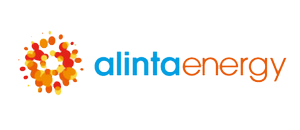
Alinta Energy earned four stars for overall satisfaction, value for money, customer service and ease of sign-up in our 2024 ratings. It was given three stars for bill and cost clarity, solar tariff rate and its online tools and advice.
Alinta Energy is a rapidly-growing energy provider, operating across QLD, NSW, SA, VIC and Western Australia. Although it doesn’t offer specialised solar plans, and maintains average solar feed-in tariff rates, it does tend to offer some of the most competitive electricity usage rates on the market. Solar customers can also benefit from Alinta Energy’s rewards program.
Here are the Alinta Energy plans on our database for NSW. These are products from a referral partner†. These costs are based on the Ausgrid network in Sydney but prices may vary depending on your circumstances. This comparison assumes general energy usage of 3911kWh/year for a residential customer on a single rate tariff. Please use our comparison tool for a specific comparison in your area. Our database may not cover all deals in your area. As always, check all details of any plan directly with the retailer before making a purchase decision.
Here are the Alinta Energy plans on our database for VIC. These are products from a referral partner†. These costs are based on the Citipower network in Melbourne but prices may vary depending on your circumstances. This comparison assumes general energy usage of 4000kWh/year for a residential customer on a single rate tariff. Please use our comparison tool for a specific comparison in your area. Our database may not cover all deals in your area. As always, check all details of any plan directly with the retailer before making a purchase decision.
Here are the Alinta Energy plans on our database for SEQ. These are products from a referral partner†. These costs are based on the Energex network in Brisbane but prices may vary depending on your circumstances. This comparison assumes general energy usage of 4613kWh/year for a residential customer on a single rate tariff. Please use our comparison tool for a specific comparison in your area. Our database may not cover all deals in your area. As always, check all details of any plan directly with the retailer before making a purchase decision.
Here are the Alinta Energy plans on our database for South Australia. These are products from a referral partner†. These costs are based on the SA Power network in Adelaide but prices may vary depending on your circumstances. This comparison assumes general energy usage of 4011kWh/year for a residential customer on a single rate tariff. Please use our comparison tool for a specific comparison in your area. Our database may not cover all deals in your area. As always, check all details of any plan directly with the retailer before making a purchase decision.
![]()
EnergyAustralia received four stars for customer service and ease of sign-up, and three stars for overall satisfaction, value for money, bill and cost clarity and online tools and advice. It was also rated two stars for its solar tariff rate.
One of Australia’s biggest energy providers, EnergyAustralia offers eligible customers a boosted solar feed-in tariff on its ‘Solar Max’ plans in NSW, VIC, QLD and SA, which is applicable for the first 15kWh of solar exported per day. Its standard plans also include competitive feed-in tariffs, and some market offers come with extras such as guaranteed discounts.
Here is the EnergyAustralia solar plan available on our database. These costs are based on the Ausgrid network in Sydney but prices will vary depending on your circumstances. Plans are listed in order of lowest price first. Annual price estimates assume general energy usage of 3911kWh/year for a residential customer on a single rate tariff. Price estimates exclude solar feed-in tariff credits. This table includes a product from a referral partner†. Our database may not cover all deals in your area, and please check retailer websites for up to date information.
Here is the EnergyAustralia solar plan available on our database. These costs are based on the Citipower network in Melbourne but prices will vary depending on your circumstances. Plans are listed in order of lowest price first. Annual price estimates assume general energy usage of 4000kWh/year for a residential customer on a single rate tariff. Price estimates exclude solar feed-in tariff credits. This table includes a product from a referral partner†. Our database may not cover all deals in your area, and please check retailer websites for up to date information.
Here is the EnergyAustralia solar plan available on our database. These costs are based on the Energex network in Brisbane but prices will vary depending on your circumstances. Plans are listed in order of lowest price first. Annual price estimates assume general energy usage of 4613kWh/year for a residential customer on a single rate tariff. Price estimates exclude solar feed-in tariff credits. This table includes a product from a referral partner†. Our database may not cover all deals in your area, and please check retailer websites for up to date information.
Here is the EnergyAustralia solar plan available on our database. These costs are based on SA Power network in Adelaide but prices will vary depending on your circumstances. Plans are listed in order of lowest price first. Annual price estimates assume general energy usage of 4011kWh/year for a residential customer on a single rate tariff. Price estimates exclude solar feed-in tariff credits. This table includes a product from a referral partner†. Our database may not cover all deals in your area, and please check retailer websites for up to date information.
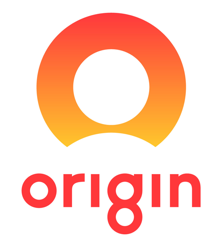
In this year’s ratings, Origin Energy managed four stars for ease of sign-up. It scored three stars for overall satisfaction, value for money, customer service, bill and cost clarity, solar tariff rate and online tools and advice.
As one of Australia’s largest energy retailers, Origin Energy has a wide range of electricity deals, including the ‘Origin Go Solar Variable’ and ‘Origin Solar Boost’ plans. Customers must have purchased a solar system from Origin to receive the best feed-in tariff. All dedicated products include above-average feed-in tariffs, and all standard Origin electricity plans include average to low buy-back rates. Origin also sells and installs solar panels, batteries, inverters, home monitoring systems and practically anything else you will need to start saving on electricity with solar.
Here are the Origin Energy solar plans available on our database in NSW. These costs are based on the Ausgrid network in Sydney but prices will vary depending on your circumstances. Plans are listed in order of lowest price first. Annual price estimates assume general energy usage of 3911kWh/year for a residential customer on a single rate tariff. Price estimates exclude solar feed-in tariff credits. This table includes products from a referral partner†. Our database may not cover all deals in your area, and please check retailer websites for up to date information.
Here are the Origin Energy solar plans available on our database in Victoria. These costs are based on the Citipower network in Melbourne but prices will vary depending on your circumstances. Plans are listed in order of lowest price first. Annual price estimates assume general energy usage of 4000kWh/year for a residential customer on a single rate tariff. Price estimates exclude solar feed-in tariff credits. This table includes products from a referral partner†. Our database may not cover all deals in your area, and please check retailer websites for up to date information.
Here are the Origin Energy solar plans available on our database in SE QLD. These costs are based on the Energex network in Brisbane but prices will vary depending on your circumstances. Plans are listed in order of lowest price first. Annual price estimates assume general energy usage of 4613kWh/year for a residential customer on a single rate tariff. Price estimates exclude solar feed-in tariff credits. This table includes products from a referral partner†. Our database may not cover all deals in your area, and please check retailer websites for up to date information.
Here are the Origin Energy solar plans available on our database in SA. These costs are based on SA Power network in Adelaide but prices will vary depending on your circumstances. Plans are listed in order of lowest price first. Annual price estimates assume general energy usage of 4011kWh/year for a residential customer on a single rate tariff. Price estimates exclude solar feed-in tariff credits. This table includes products from a referral partner†. Our database may not cover all deals in your area, and please check retailer websites for up to date information.
![]()
ActewAGL was rated four stars for ease of sign-up in our 2024 awards. It also scored three stars for overall satisfaction, value for money, customer service, bill and cost clarity, solar tariff rate and online tools and advice.
Focusing its efforts on the Australian Capital Territory, ActewAGL services residential and business customers in the ACT and nearby south-east NSW. In addition to offering electricity and gas services, ActewAGL also sells and installs solar panels, inverters and storage systems in the ACT and surrounding areas, in partnership with Solarhub. To see what ActewAGL has to offer you in terms of pricing it is best to head to its website.
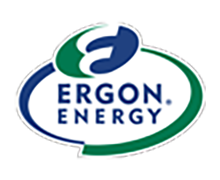
Ergon Energy earned four stars for ease of sign-up. It scored three stars for overall satisfaction, value for money, customer service, bill and cost clarity, solar tariff rate and online tools and advice.
Ergon Energy is a government-owned and operated electricity distributor and retailer that services regional Queensland from the Toowoomba and Gympie region, to south of the border with New South Wales. It also reaches out west to Mount Isa and Burketown. Ergon Energy is one of few providers in this area so there is limited choice for households and businesses: however, its prices and solar feed-in tariffs appear comparable to those in the south-east. To see what Ergon Energy has to offer you in terms of pricing it is best to head to its website.
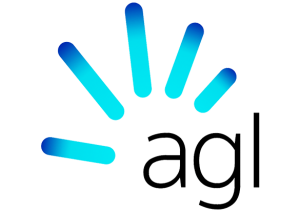
AGL was rated three stars for overall satisfaction, as well as value for money, customer service, bill and cost clarity, online tools and advice and ease of sign-up. For its solar tariff rates, its rating dropped to two stars.
As one of Australia’s largest electricity, natural gas and solar retailers, AGL offers a diverse range of energy products to suit varying needs and preferences. These include a specific deal for solar customers in the shape of ‘AGL Solar Savers’, which delivers higher than average feed-in tariffs across the states. But you may need to specifically ask for this product given that AGL does not always make it publicly available in all areas. All other AGL plans provide reduced but reasonably competitive FiTs.
Here is the AGL Solar Savers plan on our database for NSW. This is a product from a referral partner†. These costs are based on the Ausgrid network in Sydney but prices will vary depending on your circumstances. Annual price estimates assume general energy usage of 3911kWh/year for a residential customer on a single rate tariff. Solar plan price estimates exclude solar feed-in tariff credits. Our database may not cover all deals in your area, and please check retailer websites for up to date information.
Here is the AGL Solar Savers plan on our database for Victoria. This is a product from a referral partner†. These costs are based on the Citipower network in Melbourne but prices may vary depending on your circumstances. This comparison assumes general energy usage of 4000kWh/year for a residential customer on a single rate tariff. Please use our comparison tool for a specific comparison in your area. Our database may not cover all deals in your area. As always, check all details of any plan directly with the retailer before making a purchase decision.
Here is the AGL Solar Savers plan on our database for QLD. This is a product from a referral partner†. These costs are based on the Energex network in Brisbane but prices will vary depending on your circumstances. Annual price estimates assume general energy usage of 4613kWh/year for a residential customer on a single rate tariff. Solar plan price estimates exclude solar feed-in tariff credits. Our database may not cover all deals in your area, and please check retailer websites for up to date information.
Here is the AGL Solar Savers plan on our database for SA. This is a product from a referral partner†. These costs are based on SA Power network in Adelaide but prices will vary depending on your circumstances. Annual price estimates assume general energy usage of 4011kWh/year for a residential customer on a single rate tariff. Solar plan price estimates exclude solar feed-in tariff credits. Our database may not cover all deals in your area, and please check retailer websites for up to date information.

Aurora Energy received four stars for ease of sign-up. It earned three stars for overall satisfaction, customer service and bill and cost clarity and two stars for value for money, solar tariff rate and online tools and advice.
Aurora Energy was the first and only company retailing electricity in Tasmania. Only in the past few years have a handful of other companies sprung up as competition in the state. The retailer offers feed-in tariffs in-line with the government-set minimum and customers can track their ‘net’ solar exports through the aurora+ app.
A growing number of Aussies are turning to solar to escape rising power prices. Recognising this, more and more energy retailers are focusing on products designed to help solar customers save. Households with solar panels now have a large number of options available to them, meaning it’s more important than ever to frequently compare providers and products. It also means that you need to be increasingly wary of traps – while a particular plan might include a very juicy feed-in tariff, this may be compensated for with increased electricity rates or smaller discounts.
When comparing providers, be sure to look at their energy price fact sheets and ask plenty of questions if you’re unsure about any of the terms. Just like all energy users, solar customers shouldn’t just set and forget with one provider. Make sure you regularly compare retailers and plans so you can truly maximise your solar savings.

Tara Donnelly is an internet and mobile expert – sectors she’s spent a decade covering – and also oversees energy and consumer technology content. She holds a Bachelor of Communications from the University of Canberra and has shared her expertise on national media including 9 News, 7 News, Sunrise and the ABC.
Meet the Editorial Team
Samantha Howse is Canstar Blue’s Consumer Research Specialist, coordinating the consumer research program behind our customer satisfaction awards across Canstar and Canstar Blue in Australia and New Zealand. Sam has earned a Bachelor of Business (Marketing) from Griffith University and, with seven years in market research and two years in marketing, she is experienced in survey design, implementation and analysis, coupled with an understanding of marketing principles and best practice.
Meet the Research TeamThere are many factors to consider when it comes to whether or not solar is a wise financial investment. For some high-level guidance, our latest survey found that:
So whether you’re considering installing solar panels for the first time, or just looking to boost the value of your current home with a better deal from a retailer, here is a guide to help you along, including details of the solar feed-in tariffs available in your area.
Although there are fewer government incentives for installing solar today than there were a decade ago, there are still two schemes in place that dramatically reduce the cost of installing solar and can improve your return on investment. These are feed-in tariffs and Small-scale Technology Certificates (STCs).
Some states have begun introducing time-varying feed-in tariffs. This new FiT is similar to a time of use tariff in that the rate you receive for exported solar varies depending on the time of day. Customers are paid a hefty FiT rate during peak hours when everyone is using electricity, but the trade-off is that you are then paid slightly less for exported electricity throughout most of the day when demand is comparatively low.
Time-varying feed-in tariffs require a smart meter and have been compulsory in Victoria since July 2019. From this time, the minimum time-varying FiT will be 5.01-7.1c/kWh. There is also a single range FiT of 5.2c/kWh, with one flat rate applying for all energy exported regardless of the time of day. NSW also has minimum time-dependent FiTs ranging from 5.6c/kWh and 9.7c/kWh: however, conditions apply.
Most Australians are by now well aware of the advantages of solar power. That said, it’s not necessarily a good investment for everyone. If you’re yet to install solar, here are a few key points to consider:
It’s important to understand that the Solar Bonus Scheme is now closed to new customers. This means that if you have recently installed a solar system – or you plan to soon – you will not receive a premium feed-in tariff, only the basic FiT of about four to 18 cents per kilowatt hour (kWh), depending on your location and retailer. However, some solar companies are now offering seemingly generous rates of their own to attract new customers.
However, while new customers cannot join, some schemes are still in operation for existing customers. The Queensland and South Australian schemes, for example, are still honouring boosted feed-in tariffs until 2028, while Victorian households can cash in on high returns until November 2024.
Unfortunately for households in New South Wales, their Solar Bonus Scheme expired at the end of 2016.
Solar is quickly becoming a key battleground for energy companies. We are seeing solar energy providers getting increasingly creative with their plans, particularly through the use of Virtual Power Plants (VPP). Some retailers have also experimented with variable rate feed-in tariffs, where the rate you receive for your solar-generated electricity will vary depending on current wholesale prices.
While there are some solar-focused energy retailers and products, in the majority of cases, signing up to a solar plan will not be too dissimilar to an ordinary electricity plan. The only difference is that you will also receive a feed-in tariff, so assuming you’re entirely self-sufficient, you’ll still need to compare plans based on the usage and supply charges. However, it appears that solar-specific products are becoming more common, with the likes of AGL and Origin offering higher-than-average feed-in tariffs on some plans.
Here are the previous winners of Canstar Blue’s Electricity Solar Providers – National Customer Satisfaction Award:
*NSW, QLD and SA: Price is GST inclusive and is: The estimated lowest possible price a representative customer would be charged in a year for this plan, assuming all conditions of discounts offered (if any) have been met, based on the AER’s model annual usage in the distribution region as stated at the top of each table.
~VIC: Price is GST inclusive and is: The estimated lowest possible price a customer would be charged in a year for this plan, using the Victorian Government’s annual reference consumption for domestic customers in your distribution region as stated at the top of each table and assuming all conditions of discounts offered (if any) have been met.
ACT: Price is GST inclusive and is: The estimated lowest possible price a representative customer would be charged in a year for this plan, using the Independent Competition and Regulatory Commission (ICRC) annual reference consumption for domestic customers in your distribution region as stated at the top of each table and assuming all conditions of discounts offered (if any) have been met.
TAS: The price shown is inclusive of GST and is the estimated lowest possible price a representative customer would be charged in a year for this plan, assuming all conditions of discounts offered, if any, have been met. The general usage for products displayed in the table for Tasmanian postcodes is based on the median electricity usage of customers in Tasmania. The median usages are: 2,947 kWh/year for a Single Rate tariff, and 7,428 kWh/year for a Single Rate + Controlled Load tariff. These usage assumptions are based on the latest Typical Electricity Customers in Tasmania report released by the Office of the Tasmanian Economic Regulator. If the amount of electricity you actually use differs greatly from this estimate, your bill could be significantly larger or smaller than the charges listed for each plan.
Some plans may require you to meet certain conditions before a discount may become available to you. Check the energy provider’s plan information for details of all possible discounts that may apply and any conditions that need to be met to be eligible for these discounts. Some plans may have a minimum term longer than one year. In that case the total cost over the term will be much higher than the price (which is only for one year). Consider the provider’s detailed product and pricing information before making a decision to take out a new plan or switch electricity providers.
^What is the Reference Price?
The reference price is set by the Australian Energy Regulator (AER) for a financial year in relation to electricity supply to residential customers in the distribution region and is based on an assumed annual usage amount. Any difference between the reference price and the unconditional price of a plan is expressed as a percentage more or less than the reference price. The terms of any conditional discounts are shown, along with any further difference between the reference price and the discount applied if a condition is met, expressed as a percentage more or less than the reference price.
>What is the VDO?
The Victorian Default Offer (VDO) includes a daily supply charge and usage charges (per kilowatt hour). Differences in tariffs across distribution regions reflect the unique costs of providing electricity services in each area. The difference between the VDO and the unconditional price of a plan, based on the Victorian Government’s annual reference consumption for domestic customers in the distribution region, is expressed as a percentage more or less than the VDO. The terms of any conditional discounts are shown, along with any further difference between the VDO and the discount applied if a condition is met, expressed as a percentage more or less than the VDO.
Solar Products:
Annual cost estimates exclude solar payments. Feed-in tariffs shown are single rate only. Solar products may only be available to solar customers and some products may only be available to customers who purchase solar PV or other products through the retailer.
Referral Partners
†By clicking on a brand, 'go to site', 'shop online', 'get quotes now', or 'see offer' button, you will leave Canstar Blue and be taken to our referral partner to compare. Canstar Blue may be paid for this referral. You agree that Canstar Blue’s terms and conditions apply to this referral. Please note that references to an 'offer' do not mean that you will automatically be accepted or eligible for a product, eligibility requirements may apply.
Canstar Blue may earn a fee for referrals from its website tables, and from sponsorship of certain products. Fees payable by product providers for referrals and sponsorship may vary between providers, website position, and revenue model. Sponsorship fees may be higher than referral fees. Sponsored products are clearly disclosed as such on website pages. They may appear in a number of areas of the website such as in comparison tables, on hub pages and in articles. Sponsored products may be displayed in a fixed position in a table, regardless of the product's rating, price or other attributes. The table position of a Sponsored product does not indicate any ranking or rating by Canstar. The table position of a Sponsored product does not change when a consumer changes the sort order of the table. For more information please see How Are We Funded.